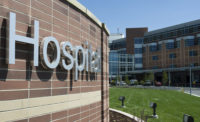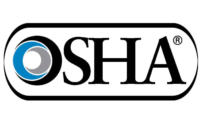Use of respirators in healthcare settings

Source: NIOSH
One of the occupational hazards in the healthcare setting is the airborne transmission of certain infectious diseases.1 The potential of exposure is not limited to physicians, nurses, and support personnel in direct patient care. It extends to those delivering food, cleaning patient rooms, and performing maintenance. Anyone working in areas with patients infected with airborne-transmissible diseases is potentially at risk.
HICPAC 2007 Guideline for Isolation Precautions: Preventing Transmission of Infectious Agents in Healthcare Settings.http://www.cdc.gov/hicpac/pdf/isolation/Isolation2007.pdf
Wearing appropriate respiratory protection when necessary is a vital line of defense. In healthcare, the N95 filtering facepiece respirator is the most commonly used.
Employers and employees need to follow safety and health standards established by the Occupational Safety and Health Administration (OSHA), the Joint Commission, the Food and Drug Administration (FDA), the Centers for Medicare and Medicaid, and other organizations.
It is important for you to be aware of the following considerations with respiratory protection products:
• Follow the guidance of your organization’s respiratory protection program, including medical clearance
• Be sure you are using a NIOSH-approved respirator
• Get fit-tested on an annual basis
• Know how to don and doff the specific brand and model of respirator you are using
• Know how to use the respirator safely and effectively
All respirators used in healthcare settings must be approved by NIOSH and are thoroughly evaluated and tested by NIOSH to meet strict federal safety requirements. To receive NIOSH approval, respirators must adhere to established standards of quality and performance. Only then will NIOSH authorize a respirator manufacturer to use the NIOSH name in block letters or a NIOSH logo on the product. Manufacturers must have and maintain an established quality program that ensures that their products meet the NIOSH requirements.
Unlike surgical masks, respirators are specifically designed to provide respiratory protection by forming a tight seal against the wearer’s skin and efficiently filtering out airborne particles including pathogens.
The N95 designation indicates that the respirator filters at least 95% of airborne particles.
Personnel must use respirators in conjunction with the OSHA 1910.134 comprehensive respiratory protection program standards. Employers are required to develop and implement a written respiratory protection program with procedures specific to the workplace, and to provide qualified training in those procedures. The complete OSHA 1910.134 standard can be found at http://www.osha.gov (search standard 1910.134).
Markings on a NIOSH-approved filtering facepiece respirator may appear on the facepiece itself or on the straps and include the elements shown below. If a filtering facepiece respirator has approval markings but is not on the NIOSH table of approved filtering facepiece respirators, it is likely to be either a counterfeit product or a respirator that has had its certification revoked or rescinded by NIOSH. If there is no TC number on the respirator’s packaging, the user instructions, or the product itself, it is not NIOSH-approved. If you are unsure of your respirator’s approval status, you can call NIOSH at 412-386-4000.
Example of Exterior Markings on a NIOSH-Approved Filtering Facepiece Respirator
1. NIOSH TC Approval Number - TC-84A-xxxx
2. Brand name, registered trademark, or an easily understood abbreviation
3. NIOSH name in block letters or a NIOSH logo
4. Filter Class (N, P, or R) and Filter Efficiency Level (95, 99, or 100)
5. Lot Number - recommended but not required
6. Model Number
Looking for a reprint of this article?
From high-res PDFs to custom plaques, order your copy today!






